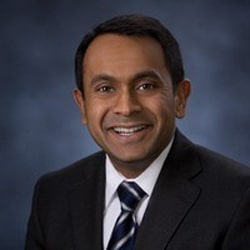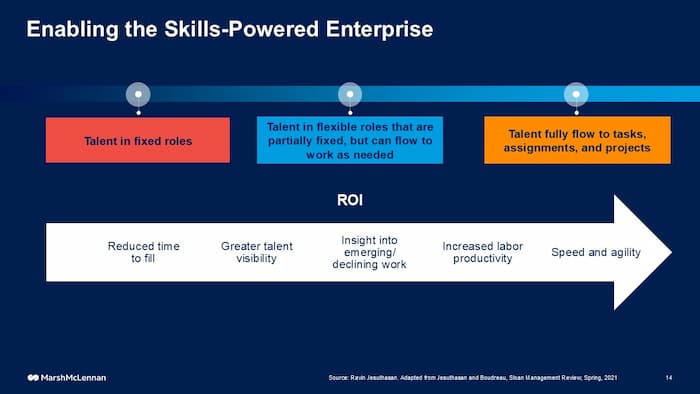In the four years since the start of the COVID-19 pandemic, the volatility in the global economy has increased 2.5 times more than it had in the previous three decades, according to the World Economic Forum.
Business leaders are contending with a “poly-crisis world”—a heightened risk environment, rising importance of sustainability, new ways of working—with the “ultimate kicker” being the acceleration and impact of generative AI, said Ravin Jesuthasan at the closing keynote address at the HR Tech Conference in Las Vegas on Thursday.
Jesuthasan, global leader of Mercer’s Transformation Services business, said those crises are collectively redefining work—away from the traditional focus on the static job to the more fluid flow of talent to work based on skills.

“In a complex world, the narrative shifts toward one of speed, agility and a much stronger focus on execution,” Jesuthasan said.
This is moving the focus from traditional hierarchies, structured around deploying talent in a scalable way, to a hybrid, agile structure—with more emphasis on agile teams—and, ultimately, to a “networked ecosystem.” In this approach, teams are often autonomous and can quickly form and disperse—based on the skills needed for the work.
“We’re seeing a fundamental transition in how we think about work.”
The reset of work toward skills
Skills, not jobs, will be the currency of work in the future, Jesuthasan said. To enable environments that allow that reality to flourish, he advised HR and business leaders to ask themselves two questions:
- How can work be redesigned to flow talent to the work while continuously reinventing work?
- How can we create a culture that meets employees where they are in this environment?
To illustrate this process in action, Jesuthasan offered the example of Providence Health System.
The pandemic and ensuing talent scarcity allowed the organization to rethink how employees were using their skills, particularly nursing professionals. Traditionally, nurses were asked to perform tasks such as taking patients’ temperatures or repositioning intubated patients—work that wasn’t allowing them to flex their skills fully and that could be handled by certified and trained medical or nursing assistants. Shifting this work freed nurses up to “flow to the top of their license” and concentrate on more sophisticated aspects of patient care.
The effort was focused on “bending the demand curve of work in a different way, with skills being the thing that determines how to realign and reorder work,” Jesuthasan said.
A new operating model for skills-focused organizations
Jesuthasan offered a four-part framework that can enable organizations to lean into the agility needed to thrive in a fluid, skills-focused environment:
- Focus on the work, not the jobs.
- Fuse human and automation capabilities.
- Explore the full range of work arrangements.
- Enable talent to “flow” to work.
 Organizations that start this transformation focused on the work itself—and not necessarily the technology to enable the work—“consistently get to higher-order outcomes than ones enamored or seduced by technology,” he said.
Organizations that start this transformation focused on the work itself—and not necessarily the technology to enable the work—“consistently get to higher-order outcomes than ones enamored or seduced by technology,” he said.
However, that’s not to say technology won’t play a pivotal role.
For instance, Jesuthasan shared the internal talent marketplace journey that Unilever went on—work that started in 2017, rolled out in 2020 and ultimately has given all 70,000 white-collar workers the ability to post projects on the platform and flex to those that match their skills.
Jesuthasan called the skills-enabling solutions he saw on display in the conference’s Expo Hall “mindblowing,” with the potential to “bring to life this pivot in work that we’re seeing.” Demand for such tech, he added, is going to continue to accelerate in the coming years.
Increasingly, organizations will rethink the standard notion of work—an employee in a single job with limited career opportunities to move up or laterally. Instead, they will recognize “the unique bundle of skills, the ways people can contribute beyond their job today and—as they acquire new skills—how new and different career pathways may open for them.”
The post Skills: Putting this new currency of work into action appeared first on HR Executive.